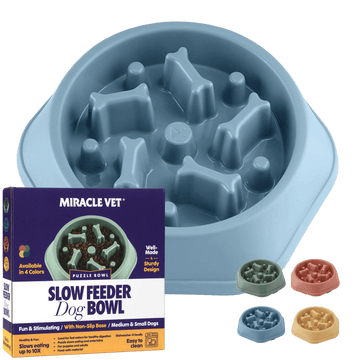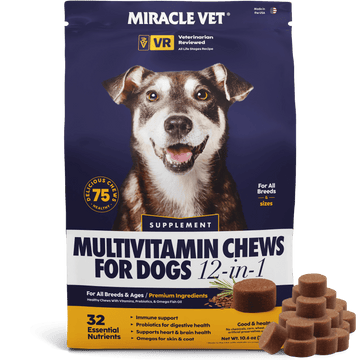
Your little Fido might look cute curled up on your living room floor, but did you know that Fido (like all dogs) originally evolved from wild wolves?
Wolves are primarily meat eaters and thrive best on a diet of other animals.
Similarly, dogs also require a meat-based, high-protein diet full of amino acids to fuel their energy, help build muscle, and keep them healthy & feeling great.
But what’s the best form of dog protein? Is meat superior, or is vegetable protein an equivalent protein source?
Read on to find the answer.
What Is Protein?
Before we get into specific protein sources, let’s take a step back and ask what protein really is.
Most people think of protein as one specific nutrient. But in reality, “protein” is really a class of compounds that contain amino acids. So how many amino acids are there?
Conceivably there could be an infinite number. But in reality, there is a handful that we are most concerned with. And there are 10 amino acids that are considered “essential amino acids” for dogs, which means that dogs cannot create them internally. They have to be ingested through their diet.
The 10 essential amino acids for dogs are:
- Arginine
- Histidine
- Isoleucine
- Leucine
- Lysine
- Methionine
- Phenylalanine
- Threonine
- Tryptophane
- Valine
Every type of food (chicken, soy, rice, etc.) will contain different amino acids, which explains why some foods are better protein sources than others.
And it’s REALLY important that your dog’s diet contains all 10 essential amino acids because otherwise, your dog will be missing out on some of the most essential nutrients their body needs to stay healthy.
Please note that throughout this article, we will be referring back to this chart several times:

This chart rates common protein sources according to their quality—which includes factors like bioavailability and amino acid content.
Plant Protein Sources
Now that we’ve explained what protein is, it should make sense when we say that nearly all foods contain some protein (amino acids). Even foods you don’t think of as being protein-rich, like spinach, will contain a few amino acids.
Plant foods almost always contain fewer amino acids than meat sources. Plant proteins are usually “incomplete proteins,” which means that most plant foods do NOT contain all 10 essential amino acids.
And this is why any plant food is usually not a good protein source for your dog.
Of course foods like spinach and other vegetables can be very healthy…just as long as they’re not your dog’s primary source of protein. (In other words, serve some chicken with that salad!)
There are some plant foods, however, that companies use as a primary plant source in their foods. Some of the common plant protein sources include:
- Pea protein
- Soy protein
- Wheat gluten
- Rice protein
For the reasons explained above, these are almost always inferior protein sources. They don’t contain all the essential amino acids, which means they could be leaving your dog with an unhealthy nutritional gap.
A much better choice of protein would be…
Meat Protein Sources
If you look back at this chart:
You’ll notice that the highest-rated proteins are all meat sources (except for the very top one, which we’ll get to in a minute).
That’s no accident!
Meat tends to be a fantastic protein source, and just about every meat source is a complete protein (contains all the essential amino acids).
This makes sense when you think about it: amino acids (protein) are the building blocks of muscle tissue. Meat is muscle tissue. So it makes sense that meat would be a great source of protein!
Meat should make up the majority of your dog’s daily protein intake. Make sure that the #1 ingredient in your dog food is some kind of named meat source or meat meal.
(When I say “named,” I mean that the label should specify what kind of meat it is—chicken meal, beef, etc. Any food that lists something generic like “Meat meal” is a very low-quality food if it d
And when it comes to dry food, I recommend looking for a meat MEAL specifically. Meat meal basically just means that the meat has been dehydrated. The moisture has been removed.
As a result, meat meal is much more concentrated and therefore has approximately 300% more protein than regular meat.
So if you feed your dog a dry food, make sure the #1 ingredient is some kind of named meat meal. (Hint: check out our Miracle Vet Super Premium Dog Food. The #1 AND #2 ingredients are a named meat meal—whitefish meal and duck meal.)
Whey Protein Sources
You may have noticed that the very top row in this chart is whey protein, which is neither a meat-based nor a plant-based protein.
In fact, we can color-code this chart according to the protein source…and you’ll see that whey protein blows all the other protein sources out of the water!
Whey actually comes from dairy, where it’s separated from other, lower-quality proteins like casein.
The result is a protein that’s extraordinarily rich in amino acids and very easily absorbed.
Now as I mentioned earlier, your dog’s day-to-day diet should consist mainly of meat sources. But if you want to make sure your dog gets all the amino acids they need to grow and stay healthy, it’s a great idea to give a little whey protein every now and then as a supplement.
Our Miracle Vet Weight Gainer is a great source of both whey protein and heart-healthy fish oil and is an ideal choice for dogs that are underweight or highly active.
So what do you think? Are you convinced that the ideal diet for a dog is based around meat with some healthy vegetables and the occasional whey supplement? Let us know in the comments!









